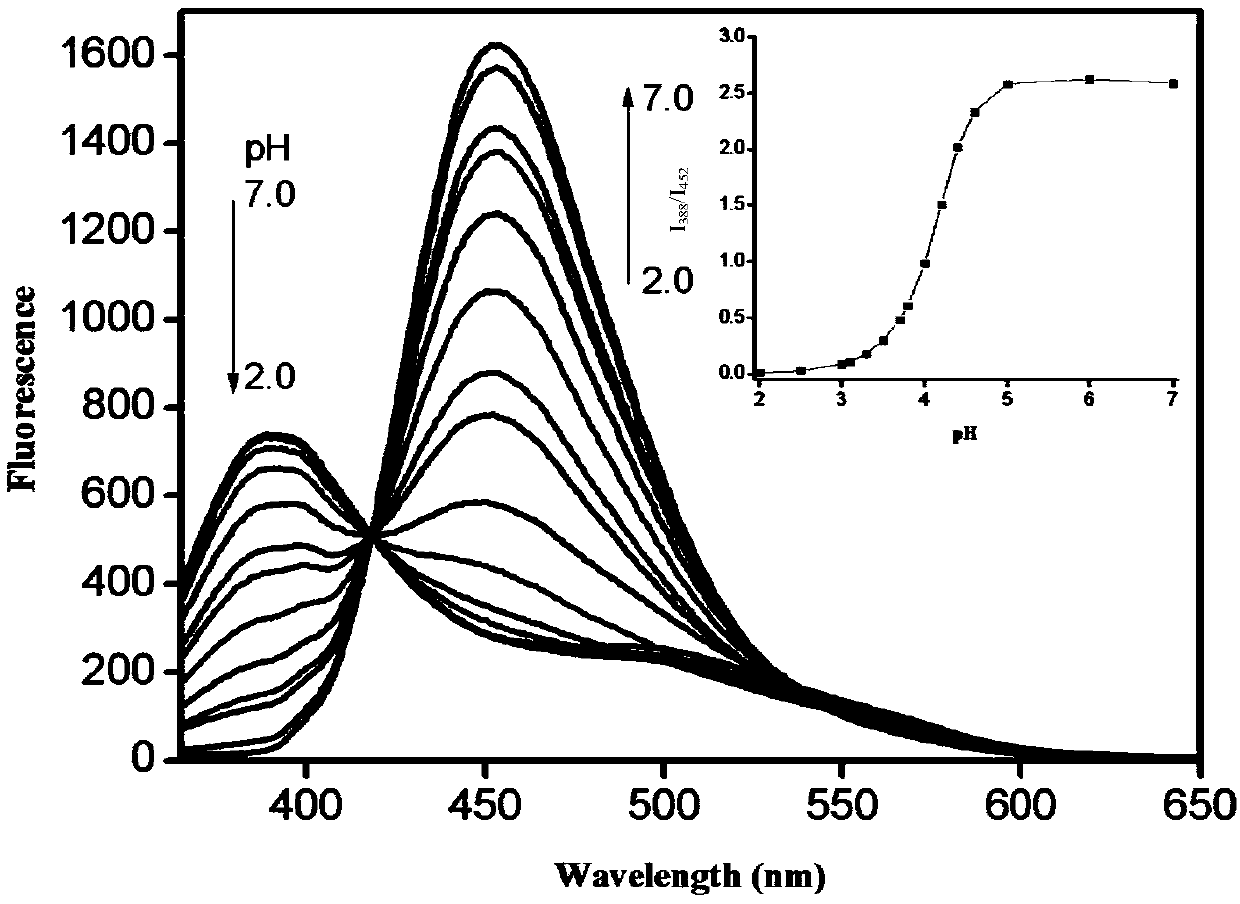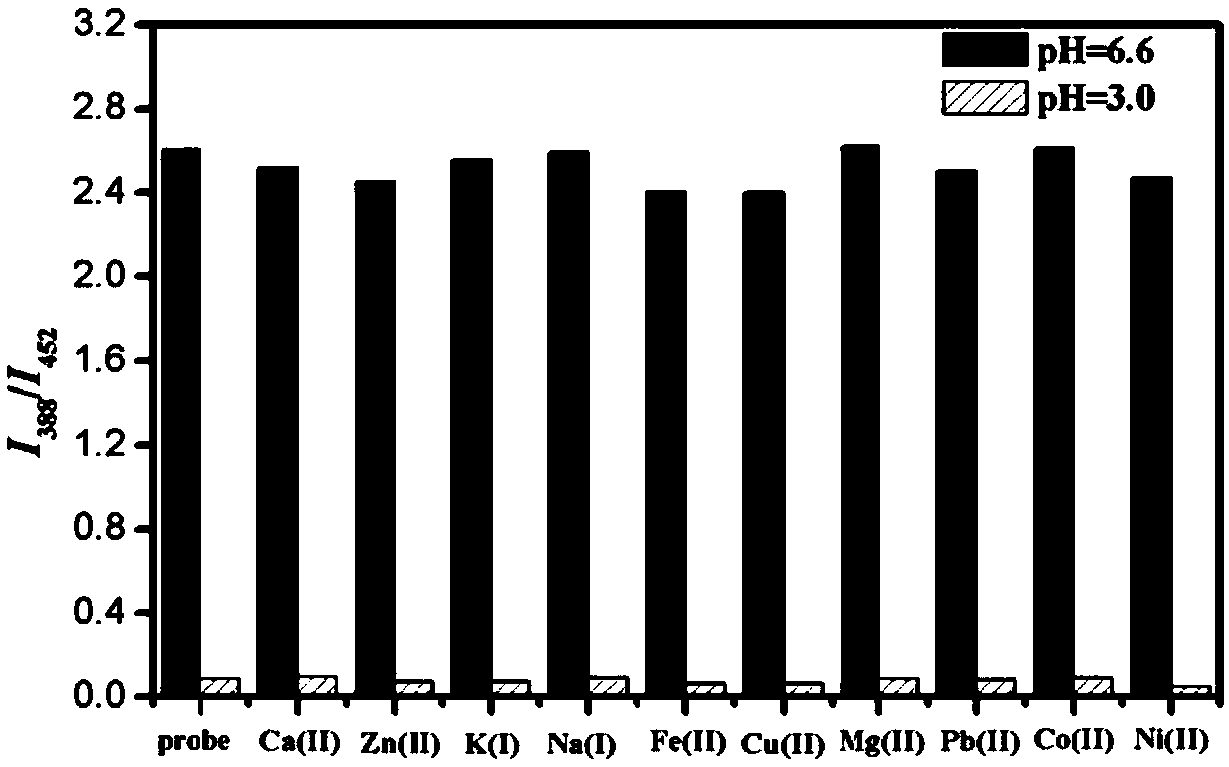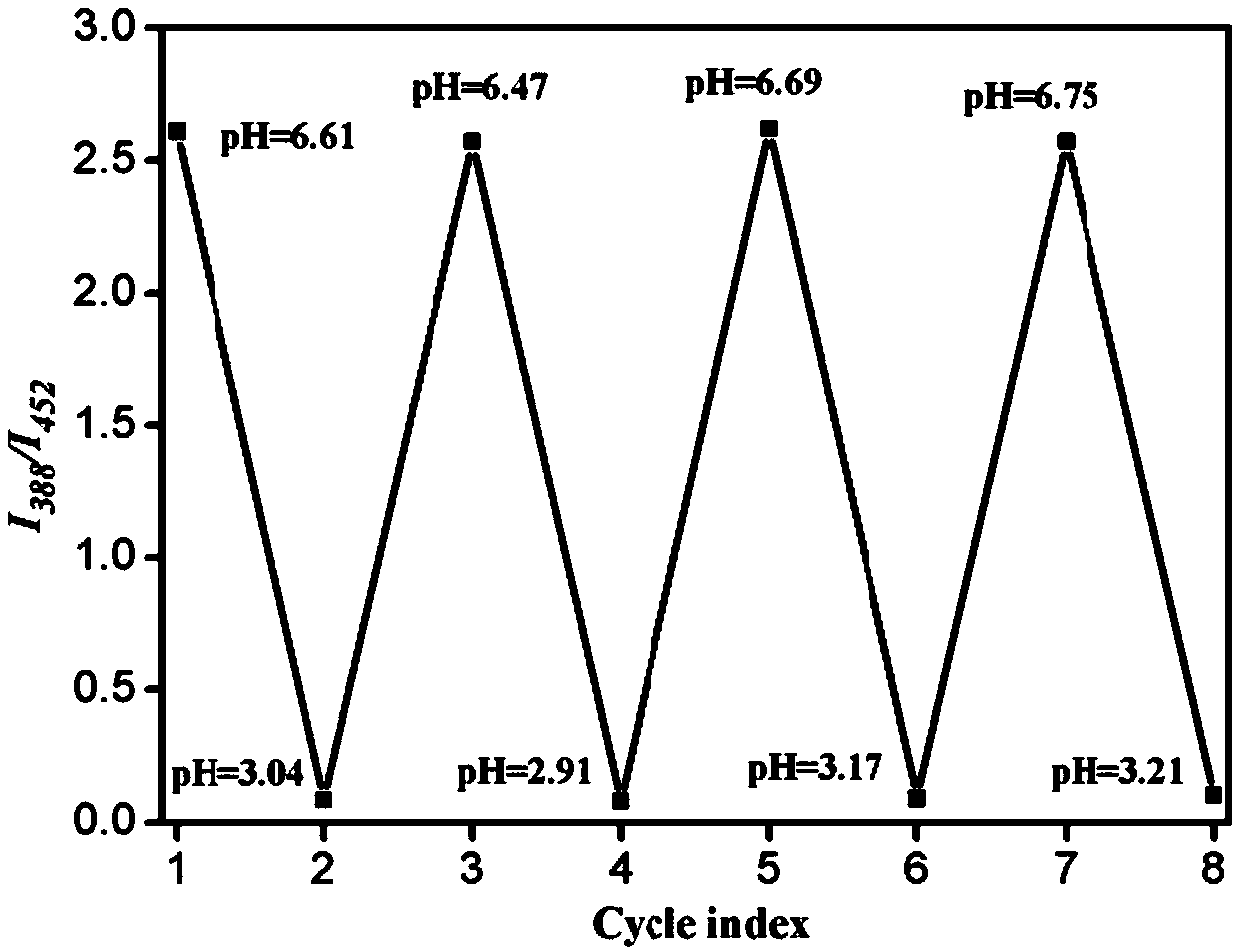A kind of ph fluorescent probe containing a double protonation site of pyridine and morpholine group, preparation method and application
A fluorescent probe and pyridine group technology, applied in the detection field, can solve the problems of low sensitivity and achieve high sensitivity, strong anti-interference, and good acid-base reversibility
- Summary
- Abstract
- Description
- Claims
- Application Information
AI Technical Summary
Problems solved by technology
Method used
Image
Examples
Embodiment 1
[0027] Example 1: Synthesis of Target Fluorescent Probe Molecules
[0028] (a) In a 250mL single-necked flask, 4-bromo-1,8-dinaphthalic anhydride (15g, 54mmol), 4-(2-aminoethyl)morpholine (7g, 54mmol) and 150mL methanol were added in sequence, and the mixture was refluxed. The reaction was carried out under the conditions for 8 h, cooled to room temperature, filtered and dried to obtain compound 1 as a pale yellow solid, 17 g, with a yield of 81.0%.
[0029](b) In a 250mL single-necked flask, sequentially add product 1 (15g, 38.5mmol), sodium methoxide (0.21g, 3.9mmol) and 150mL of anhydrous methanol, react under reflux for 36h, filter with suction, filter the cake with dilute hydrochloric acid (10%), then washed with water, and dried to obtain compound 2, a yellow solid, 10.9 g, with a yield of 83.2%.
[0030] (c) In a 250mL single-necked flask, add product 2 (10g, 29.4mmol) molecules and 100mL concentrated HI (57%), react under reflux for 6h, cool to room temperature, and n...
Embodiment 2
[0037] Embodiment 2: Fluorescence titration experiment
[0038] The detection of the target fluorescent probe molecule to the pH value can be studied by the fluorescence titration experiment and its fluorescence properties (the fluorescence emission intensity ratio at the two wavelengths of 388nm and 452nm) with the change curve of the pH value, the results are shown in figure 1 The results showed that probe 1 was suitable for detecting the pH value in an environment with a pH range of 3.1-5.0. According to the Henderson-Hasselbatch Type equation (log[(Imax-I) / (I-Imin)]=pKa-pH), the pKa value of probe 1 was calculated to be 4.05. Thus, the compounds of the present invention can be used to detect pH under acidic conditions.
Embodiment 3
[0039] Embodiment three: ion selectivity experiment
[0040] Using the target fluorescent probe molecule obtained in the above-mentioned Example 1, evaluate its selectivity to hydrogen ions, add 5 μ M probe 1 to the solution containing various metal ions (25 mM Na + , 5mM K + , Ca 2+ ; 0.1 mM Mg 2+ , Mn 2+ , Fe 2+ , Ni 2+ , Pb 2+ , Cu 2+ , Cr 2+ ) in aqueous solutions of different pH values (pH 6.6 or 3.0), measure the fluorescence emission spectrum. The results are shown in figure 2 .
[0041] In the figure, the vertical axis is the ratio of the fluorescence emission intensity at 405nm and 450nm in the emission spectrum of the probe in aqueous solutions with different pH values and containing different metal ions. The probe of the present invention has extremely high selectivity to hydrogen ions, that is, the probe has extremely strong selectivity to hydrogen ions, even if a large amount of sodium ions, potassium ions, calcium ions, and magnesium ions that exi...
PUM
 Login to View More
Login to View More Abstract
Description
Claims
Application Information
 Login to View More
Login to View More - R&D
- Intellectual Property
- Life Sciences
- Materials
- Tech Scout
- Unparalleled Data Quality
- Higher Quality Content
- 60% Fewer Hallucinations
Browse by: Latest US Patents, China's latest patents, Technical Efficacy Thesaurus, Application Domain, Technology Topic, Popular Technical Reports.
© 2025 PatSnap. All rights reserved.Legal|Privacy policy|Modern Slavery Act Transparency Statement|Sitemap|About US| Contact US: help@patsnap.com



